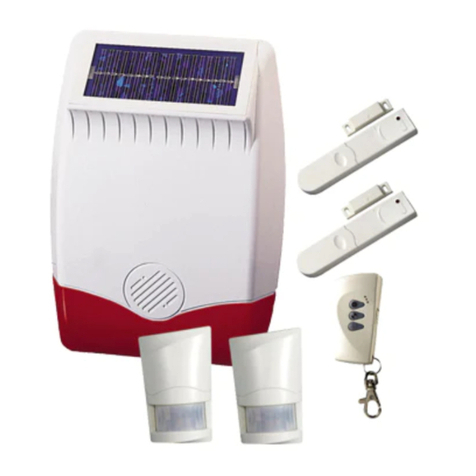- 2 -
Safety Notice
1. Do not drop, puncture or disassemble the panel or camera; otherwise the warranty will be
voided.
2. Avoid all contact with water, and dry hands before using.
3. Never tug on the power cords. Use the plug to unplug it from the wall outlet.
4. Do not expose the panel or accessory camera to high temperature or leave it in direct
sunlight. Doing so may damage the device or cause the device to malfunction.
5. Use the device with care. Avoid harsh impact on the device.
6. For your own safety, avoid using the accessory camera or power off the camera when there is
a storm or lightning.
7. The panel is for indoor use. Do not expose the panel to outdoor harsh weather.
8. Use only the accessories and power adapters supplied by the manufacturer.
9. To meet the regulations pertaining to parental responsibility, keep the device out of the reach
of infants.
FCC/CE Warning
This equipment has been tested and found to comply with limits for a Class B
digital device, pursuant to Part 15 of the FCC rules and ETSI (EN) 300 440.
These limits are designed to provide reasonable protection against harmful
interference in residential installations. This equipment generates, uses, and
can radiate radio frequency energy, and if not installed and used in accordance with the instructions, may
cause harmful interference to radio communications.
However, there is no guarantee that interference will not occur in a particular installation. If this equipment
does cause interference to radio or television equipment reception, which can be determined by turning
the equipment off and on, the user is encouraged to try to correct the interference by one or more of the
following measures:
- Reorient or relocate the receiving antenna.
- Move the equipment away from the receiver.
- Plug the equipment into an outlet on a circuit different from that to which the receiver is connected.
- Consult the dealer or an experienced radio/television technician for additional suggestions.
You are cautioned that any change or modications to the equipment not expressly approved by the party
responsible for compliance could void your authority to operate such equipment.
Disposal
If the camera system no longer functions or can no longer be repaired, it must be disposed of according to
the valid statutory regulations. Disposal of spent batteries/accumulators:
You are required by law (Battery Ordinance) to return all spent batteries and accumulators. Disposing of
spent batteries/accumulators with common household waste is prohibited! Batteries/accumulators that
contain hazardous substances are marked with the symbols on the side. These symbols indicate that it is
prohibited to dispose of these batteries/accumulators in the household waste.
The abbreviations for the respective heavy metals are Cd = cadmium, Hg = mercury,
Pb = lead. You can return spent batteries/accumulators that can no longer be charged
to the designated collection points in your community, outlets or wherever batteries
or accumulators are sold. Following these instructions will allow you to fulll the legal
requirements and contribute to the protection of our environment!
































